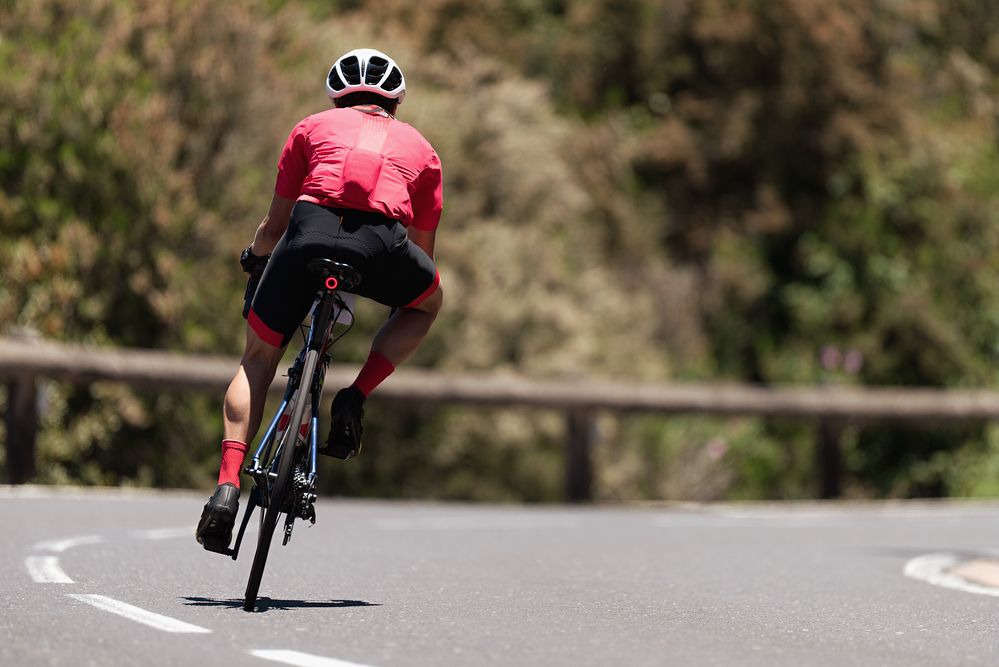How much do cyclists sweat?
Genetics and training are the two main reasons why there are such big differences in how much people sweat. But there are several other factors that influence sweat rates during exercise.
- Weather. Hot and humid environments will cause more sweating than cool environments.
- Exercise intensity. For every 1 kcal of energy produced to generate power, the body produces roughly 4 kcal of heat.
- Clothing. The wrong clothing choice can cause you to sweat more than you otherwise would.
- Heat and training adaptations. If you are a seasoned cyclist who rides in heat often, you will sweat less than someone who is new to cycling or rarely gets exposed to heat during rides.
- Genetics. Genetics determine how many sweat glands you have and how effective they are at producing sweat.
Studies confirm this by showing that different sports have different sweat rates on average. For example, American football has among the highest sweat rates because it involves a lot of clothing and protective gear, usage of big muscle groups, and a hot environment. Endurance sports like cycling are also on the higher end of the spectrum. On the other hand, soccer or baseball have lower average sweat rates. The main takeaway is that average sweat rates are not very helpful. There are simply too many variables. Every athlete has to measure their own sweat rate.

How to measure your sweat rate
Calculating a rough estimate of how much you sweat during a ride is relatively easy. The following instructions will walk you through it.
- Weigh yourself (naked) before your ride. Make sure you pee before the measurement.
- Note how much liquid you’re taking with you on the ride in water bottles.
- Go for a ride and measure how long it is.
- After you get back, fully pee, towel-dry yourself and weigh yourself (naked) again.
- Calculate how much you drank during the ride based on how much fluid is left in your water bottles.
- Estimate how much you peed during your ride. If you’re doing a stationary ride at home, you can measure it exactly. Otherwise, assume 0,3 litres per one toilet break.
- Now you can calculate your sweat rate. First, calculate the difference between your pre-ride and post-ride weight. Then add how much you drank during the ride. Then subtract how much you peed. And, finally, divide this number by the time it took to complete the ride to get your sweat rate per 1 hour.
How much sodium do you lose?
When you know how much you sweat, you can estimate your sodium losses, too. Studies show that on average, 1 litre of sweat contains 800 mg of sodium. Keep in mind that this number can vary a lot from person to person but most athletes lose between 500-1,300 mg of sodium per litre of sweat. In extreme cases with athletes that have a high sweat rate and high sodium concentrations, sodium losses could amount to several grams per hour. Thankfully, such high efforts in hot climates typically can’t be maintained for many hours.
How many other electrolytes do you lose?
There are six electrolytes you lose through sweat, most of them are in very small quantities compared to sodium and chloride, which are the two most abundant.
- Sodium (460-1840 mg)
- Chloride (700-1200 mg)
- Potassium (160-320 mg)
- Calcium (0-40 mg)
- Magnesium (4-15 mg)
- Phosphorus (3-6 mg)
Your blood concentrations of these electrolytes are always higher than sweat concentrations. This means that you always lose more liquid relative to electrolytes. It is also how your body protects itself from dangerous low-sodium status called hyponatraemia.




